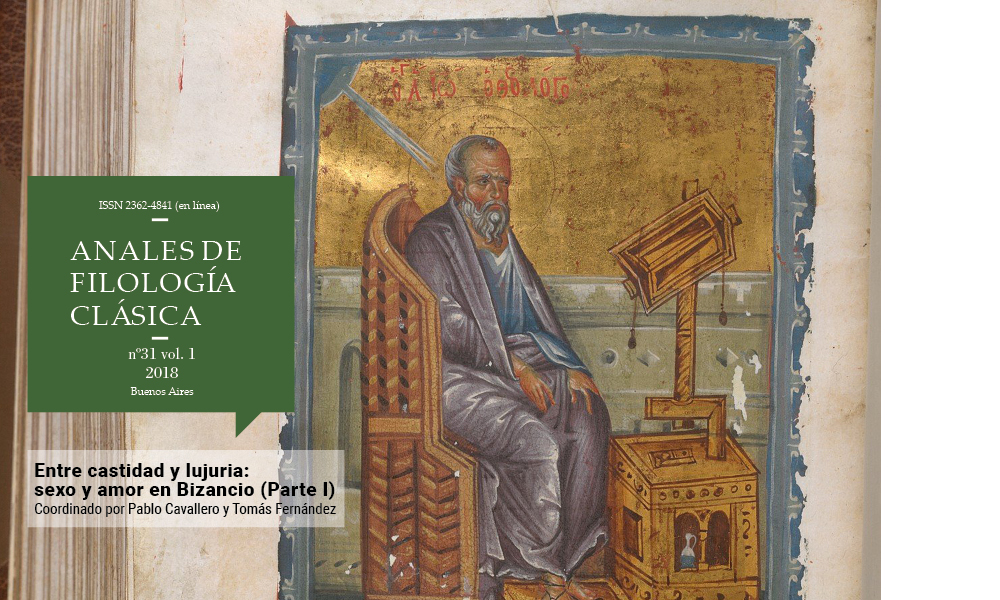“Τὸν ἄριστον βίον” (<i>Hist. Lausiaca</i> 62). Chastity and pride in the ascetic context of the proto-Byzantine hagiography
Keywords:
Byzantium, hagioagraphy, chatity, pride, asceticism
Abstract
The hypothesis of this article is that lust is not the worst sin in ascetic life, but it is a trail of pride. Here, some hagiographical texts belonging to the first Byzantine period are revised in order to establish the place given to the sex and to determine that this one has a subordinate role if it is compared with the role of pride. The conclusion is that sexuality had to be present in the hagiographical texts not only, as Kazhdan upholds, because the hagiography was an enjoyable genre whose audience did want to have sex in the content, but because all persons, including monks, are sexed and their way to confront the sexuality had a prevalent importance in ascetic life; but not because the sexual sin were the most serious, but because the ease to fall in it weakens the soul and it gives rise to the worst of the sins, the pride; or because the man’s arrogance about his own virtue blinds him and becomes evident in the lust, in order to promote a really ascetic amendment. Then, the stories which are told by the hagiographers are not only an ‘entertainment’ but a didactic tool.Downloads
Download data is not yet available.
Published
2018-02-10
How to Cite
Cavallero, P. A. (2018). “Τὸν ἄριστον βίον” (<i>Hist. Lausiaca</i> 62). Chastity and pride in the ascetic context of the proto-Byzantine hagiography. Anales De Filología Clásica, 1(31), 37-47. https://doi.org/10.34096/afc.v1i31.6139
Section
Artículos
Los autores/as que publiquen en esta revista aceptan las siguientes condiciones:
- Los autores/as conservan los derechos de autor y ceden a la revista el derecho de la primera publicación, con el trabajo registrado con la licencia de Atribución-CompartirIgual 4.0 Internacional (CC-BY-SA 4.0) de Creative Commons, que permite el uso comercial de la obra y de las posibles obras derivadas, la distribución de las cuales se debe hacer con una licencia igual a la que regula la obra original.
- Los autores/as pueden realizar otros acuerdos contractuales independientes y adicionales para la distribución no exclusiva de la versión del artículo publicado en esta revista (p. ej., incluirlo en un repositorio institucional o publicarlo en un libro) siempre que indiquen claramente que el trabajo se publicó por primera vez en esta revista.
- Se permite y recomienda a los autores/as a publicar su trabajo en Internet (por ejemplo en páginas institucionales o personales) antes y durante el proceso de revisión y publicación, ya que puede conducir a intercambios productivos y a una mayor y más rápida difusión del trabajo publicado (vea The Effect of Open Access).
En ningún momento se cobrará monto alguno al autor por la publicación en esta revista.







